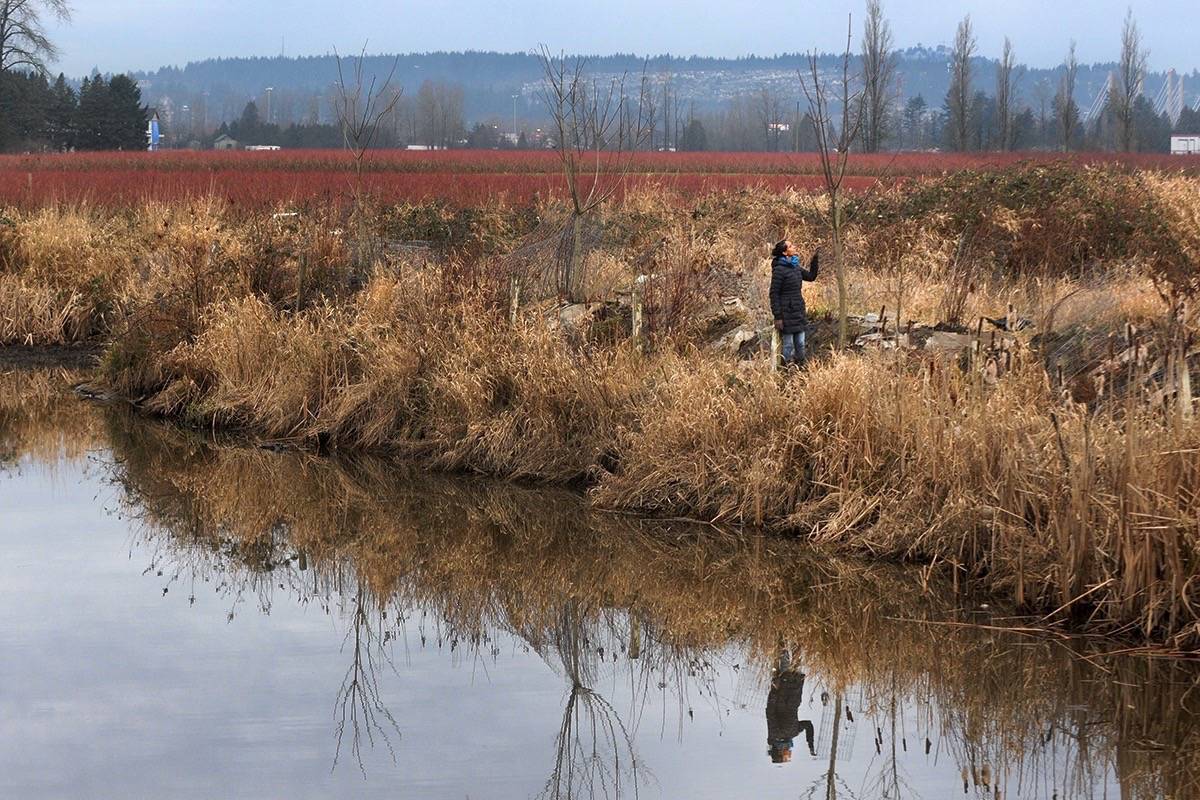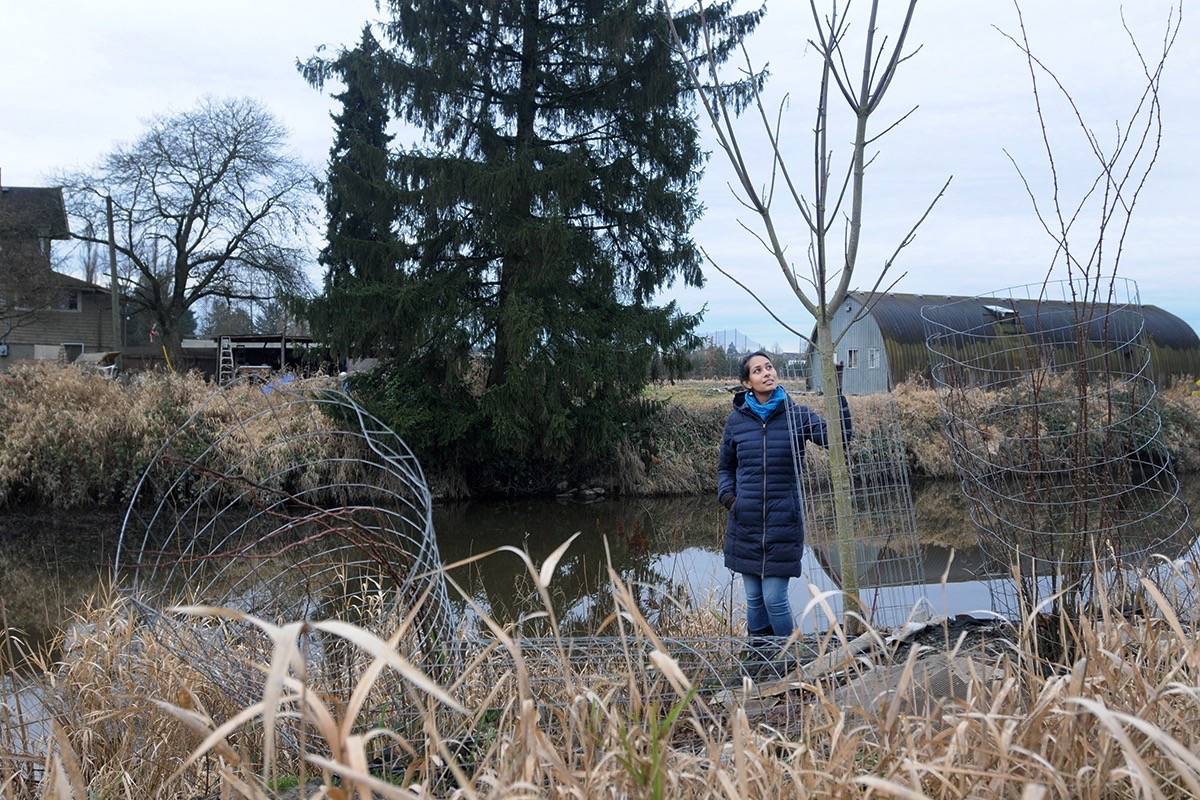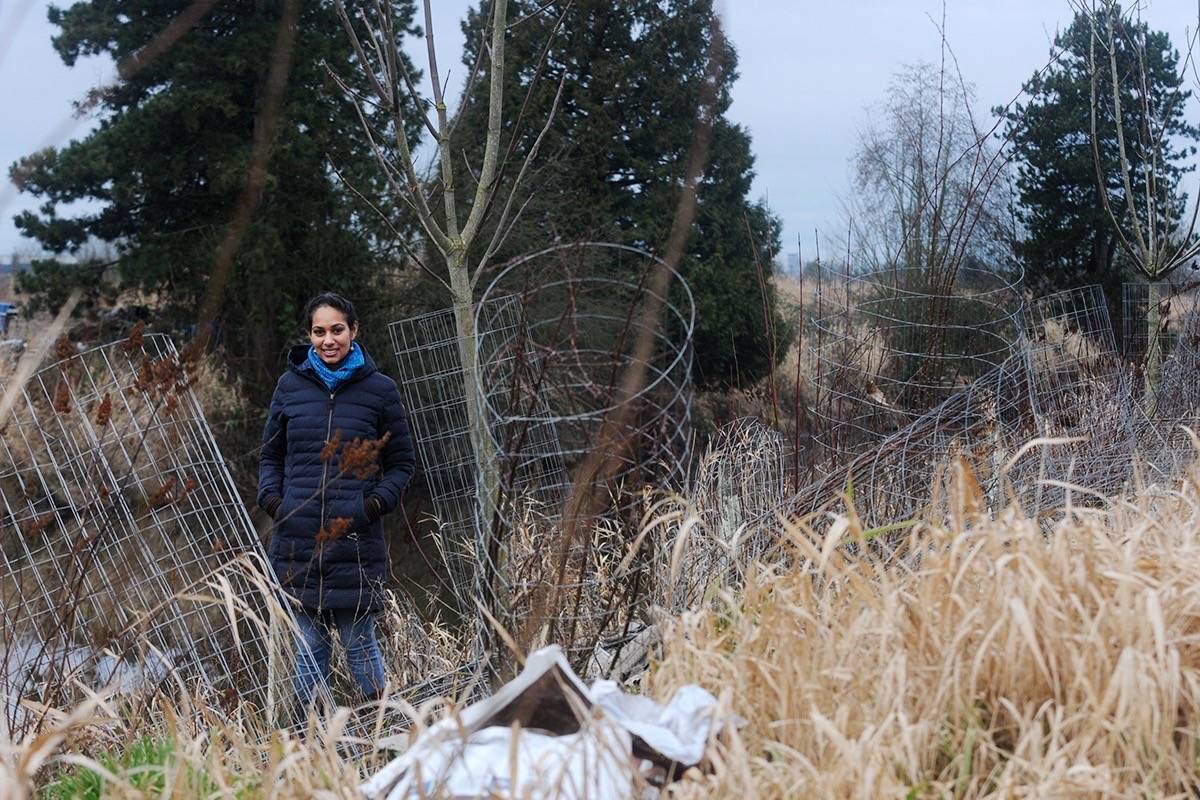Next month is going to bring some important work to Katzie Slough, says the leader of a group trying to return the polluted and weed-choked waterway into viable salmon habitat.
Lina Azeez, of the Watershed Watch Salmon Society, is mobilizing volunteers and wading through a swamp of red tape in preparation for the next phase of a model rehabilitation project on a farmer’s property.
This is a timely conversation, she said, because Saturday is World Wetlands Day, when stakeholders such as Ducks Unlimited and others, along with government organizations highlight wetlands protection.
In the summer of 2017 a Pitt Meadows farmer agreed to allow volunteers for the Friends of the Katzie Slough on his property for a riparian restoration project. Seizing the opportunity, Azeez and a group of eco-volunteers in the city went to town.
They cleared away invasive species – including thick vines of blackberries and bales of canary grass – from a stretch of streamside about 75 metres long.
They replaced them with 320 plantings – all kinds of native plants from salmonberries, thimbleberries to red osier dogwood, with unique red stems. Willows went close to the water’s edge to provide shade.
Katzie First Nation plant specialist Roma Leon offered good advice.
“Those particular plants are doing really well,” said Azeez.
She added, the tule grass at the water’s edge, recommended by Leon, is particularly thriving – despite Azeez’s initial skepticism.
“I thought they were never going to survive because they were so small.”
There were more than 20 volunteers who worked for three days. Then, because they planted in the summer, they had to “water like crazy” to make sure they plants made it through the dry season.
“Volunteers were committed to the site, and keeping the plants alive.”
The results are apparent to the volunteers and the landowner.
“He loved our work – phase one went really well.”
The volunteers included university students, parents with their children, and members of local conservation groups ARMS and KEEPS. And the local MP stopped by to put in a rose bush that has been named ‘The Dan’ in honour of Dan Ruimy.
She said within hours of planting, pollinators were already buzzing around checking out their work, and it was rewarding.
“People love it. You feel like you’re doing something to make a difference,” said Azeez.
The need for the work is obvious.
The waterway is depressingly degraded in places, with sections so choked with weeds a canoe can’t pass through.
“Sometimes you can’t see the water for all the plants on it, and it smells like manure.”
Read also: Another pitch to revive Katzie Slough
She said the city gets into the slough with a backhoe to rip up plants, but the invasive parrot feather, in particular, comes back even stronger when it is torn up, so this is a losing tactic.
Shade is the key, she said, and Richmond has had some success against parrot feather by removing it and then tarping off a section of the waterway.
She would like to see that happen in Pitt Meadows, and also believes shade from trees will help keep it down.
Azeez noted the farmer involved wanted to remain anonymous, so to not make waves with those farmers in the city who are opposed to the slough rehabilitation project. Some fear that creating a viable salmon habitat in the slough will limit its usefulness for agriculture – primarily irrigation.
His farm is located near the Harris Road Bridge, and the results are visible from the bridge deck.
Azeez said the volunteers learned a lot from the first phase, one key being that environmental concerns don’t trump the farmer’s right to use his land in a productive way.
The riparian zone they planted was about four meters up the bank, where typically they would like to go 15m. But there was an acknowledgment that he would lose too much of his field.
“This is a working farm – 15 metres is not going to work for him. You work with what he is willing to give up.”
They might not have chosen maples, but the farmer wanted them, so they planted them.
“We worked in collaboration, and that was important.”
Now, she said, the second stage will take place in March, with another 150m of the streamside to be essentially weeded and replanted. It will be the farmer’s entire waterfront restored. He won’t have to manage blackberries and other invasive plants encroaching on his field, and will have a beautiful environment.
They want to get the second phase going next month, but it is not easy to deal with the Environment Ministry to get the necessary approvals, even for improvements.
“The bureaucracy and red tap are quite extensive,” Azeez. “There. Is. A. Lot.”
But March is the best time to plant, “and we don’t want to push it back.”
They will have more than 600 plants and want to create a showcase for riparian restoration on the Katzie Slough.
“Our aim is to show that this is a model that can be used,” she said.
Azeez hosted a forum for farmers at the Bonson Community Centre in February 2017, and of the 388 farms in the city, there were 6o farmers who turned out, interested in restoring the waterway.
So she believes conservation ideas can take root, but ultimately it is city hall that will drive the massive project of the entire slough restoration.
Ducks Unlimited said wetlands conservation is an important part of fighting climate change.
“Wetlands are natural defenders against extreme weather, protecting our communities and our way of life,” said Karla Guyn, CEO of Ducks Unlimited. “Feb. 2 is World Wetlands Day. It’s time to include these ecosystems in the conversation about our changing environment and make a commitment to conserve them.”
She said wetlands store vast amounts of carbon, keeping it from being released into the atmosphere.
“Canada’s wetlands store approximately 150 billion tonnes of carbon. That’s equivalent to the emissions of roughly six billion cars over 20 years,” Guyn added. “Additionally, when one acre of wetland is returned to the landscape, it stores up to 1,000 cubic metres of runoff – or about 6,250 bathtubs worth. The benefits wetlands provide are real, and these vital ecosystems are proving their merit every day.”


